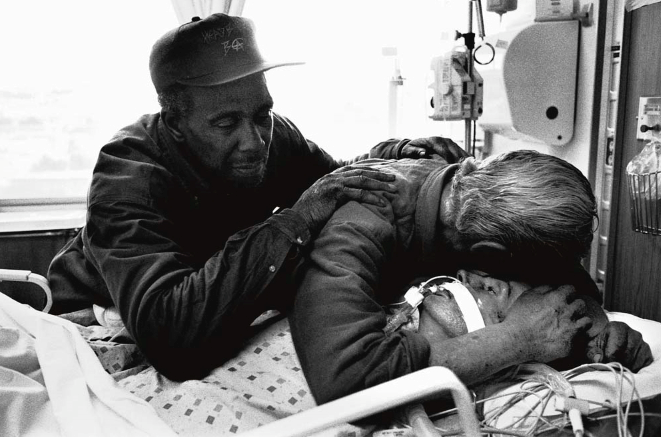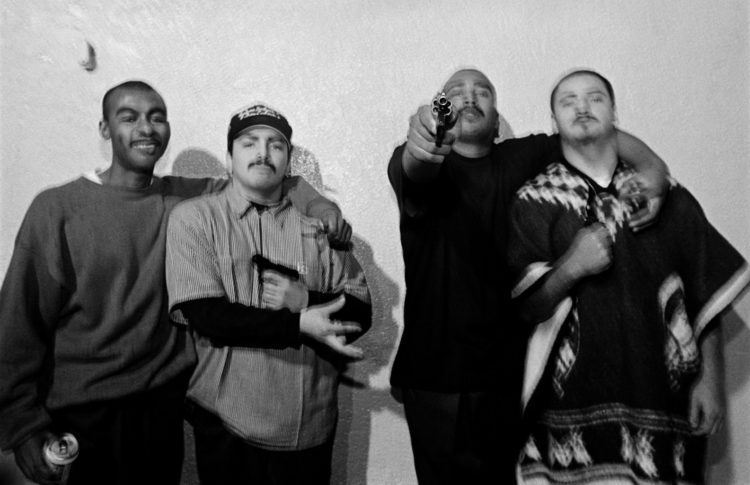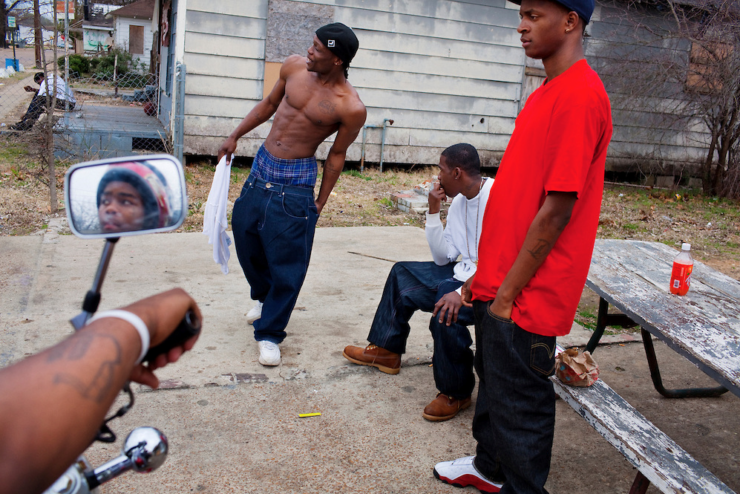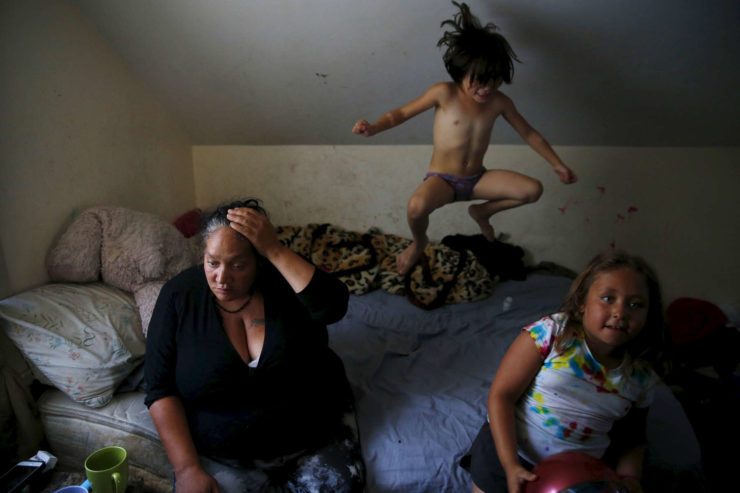Access is everything when it comes to documentary photography. Of all the challenges that immersion storytellers face in their work, perhaps none is more formidable.
Being immersed in people’s personal lives is a visceral experience that brings unique depth and dimension to a story. But the kind of trust and collaboration between subject and storyteller that defines documentary photography is difficult to earn, and perhaps even harder to maintain over the long weeks or months of a project.
"Humanity should always come first. What better way to help a person carry on as they normally would and be comfortable with you than to be yourself and to open up a bit?”
Access is sometimes described as a long hallways with many doors. Some doors are open; some are closed. Some of the closed doors will open in response to the right actions or words. Doors that are open sometimes close for no apparent reason. Some are open just long enough to get a foot inside. But they do not open and close on their own. There are people on both sides, and once access is granted, it is by no means unconditional.
At this moment when trust in media is sometimes tenuous, thinking about access in ways that extend beyond the superficial is important not only in terms of a storyteller’s craft, but also his or her credibility – and humanity.
Immersion storytellers need to become more than simply people who are looking for information or photographs. It’s important to remember that it’s possible to step out of a reporting role and relate to people through things that are common to all of us: births, deaths, retirement, embarrassment, sickness. Even something as simple as sharing a meal can demonstrate humanity. People see that behavior and recognize when a storyteller has gone beyond the role that brought them there in the first place. By showing our own humanity and doing as we would for any other person that we care about, we get to give back a little and maybe earn the trust we need to tell a story in a more compelling way.
I spoke to five photographers who have devoted their craft to the documentary genre and immersion storytelling, and they shared their experiences earning access to challenging subject matter.
****

Jeff Schonberg is a professor of anthropology and documentary photographer at San Francisco State University. He and his research partner spent 10 years documenting the lives of homeless drug users on the streets of San Francisco. He has also worked on projects involving the illicit drug economy, HIV and youth violence in the neighborhood where he lives in Oakland.
Schonberg tells his students that the same parts of themselves they use to build relationships in other areas of their lives can also be used to earn access. He explains that people sometimes emphasize certain aspects of themselves — age, gender, marital status, common interests, political views, and so on — to relate to others whether they realize it or not. For many, finding a baseline common ground is a natural way to engage with new people.
Thinking about access is sometimes complicated by the feeling that the photographer has little to offer in return; if anything. Bringing pictures or manuscripts back to subjects has always been a way to create a bond, and it can also be a good way to make introductions. But access doesn’t always have to be thought of in terms of give and take.
“It’s not always a transaction,” Schonberg says. “Sometimes the reciprocity is subtle, such as being the person they can trust, doing advocacy work in the field, being someone who is valued in some way.”
****

Joseph Rodriguez is a documentary photographer and professor at the International Center for Photography in New York City. Much of his work is focused intensively on issues of incarceration and reintegration into society. That’s rooted in his past: Rodriguez’s early life in Brooklyn was troubled by drugs and crime, and he spent time in Rikers Island prison twice as a teenager.
In the early 1990s, when Rodriguez was photographing his work “East Side Stories” about gang life in East Los Angeles, the experiences of being behind bars, having been addicted to drugs and growing up in the inner city were aspects of his life that the young gang members responded to.
“I took the photo of the four guys, and one, Scoob-Dog, is pointing a gun straight at me. They wanted to see how much I could take. When they saw that I could, they wanted to jump me in and give me a [gang] name,” Rodriguez says.
Growing up in a devoutly Catholic Latino family has also helped him to identify with many subjects he has photographed over the years.
Rodriguez’s experiences give credence to the idea that shared identities or experiences can prove useful in earning access. But as a professor, Rodriguez regularly reminds his students of the importance of time and persistence, eschewing any impressions that a person needs to be an ex-con or a former drug user to do the type of work that he does.
****
Jessica Rinaldi is a staff photographer for the Boston Globe. In 2016, she won the Pulitzer prize for feature photography for her project focusing on an abused boy in Maine, and, remarkably, was also a finalist in the same category for her photographic story about a single mother from East Boston who was addicted to heroin and struggling to hold her family together.
“I was really afraid I was going to lose her [the subject]. She had been so open, I figured I might as well tell her what I’m really interested in,” Rinaldi says. “It would be really amazing to just do a story about you if you would be open to that,” she told the woman. They talked about how showing others her personal struggle with addiction through photographs could be helpful to others in the same situation. At that point, Rinaldi told the woman straight up: “If we are going to do a story about this disease, we need to show it.”
The woman was initially nervous about incriminating herself and how the story might affect her children. Rinaldi explained to her, “It could be. It’s not a decision I can make for you, and if you don’t want to show it, we can still go on with the story. It doesn’t hinge on that.” The woman decided that if they were going to do it, they should put it all out there.
Connecting with subjects through shared identities and experience can sometimes open doors to access, but Rinaldi’s approach demonstrates the importance of being sensitive to a person’s privacy and comfort levels when it comes to the story. Transparency gave Rinaldi’s subject back some control over how they would go forward and that helped build trust between she and her subject.
****

Matt Eich is a documentary photography and university lecturer whose work spans social issues such as rural poverty and race to more introspective efforts focusing on his own family life. Since 2010, he has been working on a project titled “Sin and Salvation in a Baptist Town” — a series about housing, class and joblessness on both sides of the racial divide in Greenwood, Miss.
Working in a town that was similar in size to where he grew up, but culturally very different, he was aware of the importance of finding someone well established in the community and also receptive to his interests.
“There is always going to have to be some kind of human approval from someone when you wander into a world that you don’t belong to,” Eich says.
For him, the process of meeting people tends to begin with explanations that tend to evolve over the course of the project. Understanding that people have different thresholds of trust and accessibility, he began with a general curiosity about the place itself. His overtures evolved into: “I’m interested in race relations in this town.” And finally: “How do we better understand our neighbors?”
Eich strives to maintain a humble but open perspective. “If you’re interested enough in someone to just be with them and listen to what they have to say, that can have real tangible value to people in life,” he says.
****

Anthony Karen is a documentary photographer and a former Marine with years of experience photographing far-right extremist groups in the United States and other challenging subject matters. Showing his own humanity through small gestures has helped him build relationships with groups that are notoriously suspicious of outsiders.
He found that even when a group leader had granted him approval to photograph, the individual members were highly suspicious of him. “I prefer not to make people uncomfortable, so in those situations I leave my camera out of it and spend time just getting to know folks,” Karen says. “Consider what you’re asking of people. Sometimes it just takes time and patience.”
"Humanity should always come first,” Karen says. “What better way to help a person carry on as they normally would and be comfortable with you than to be yourself and to open up a bit?”



